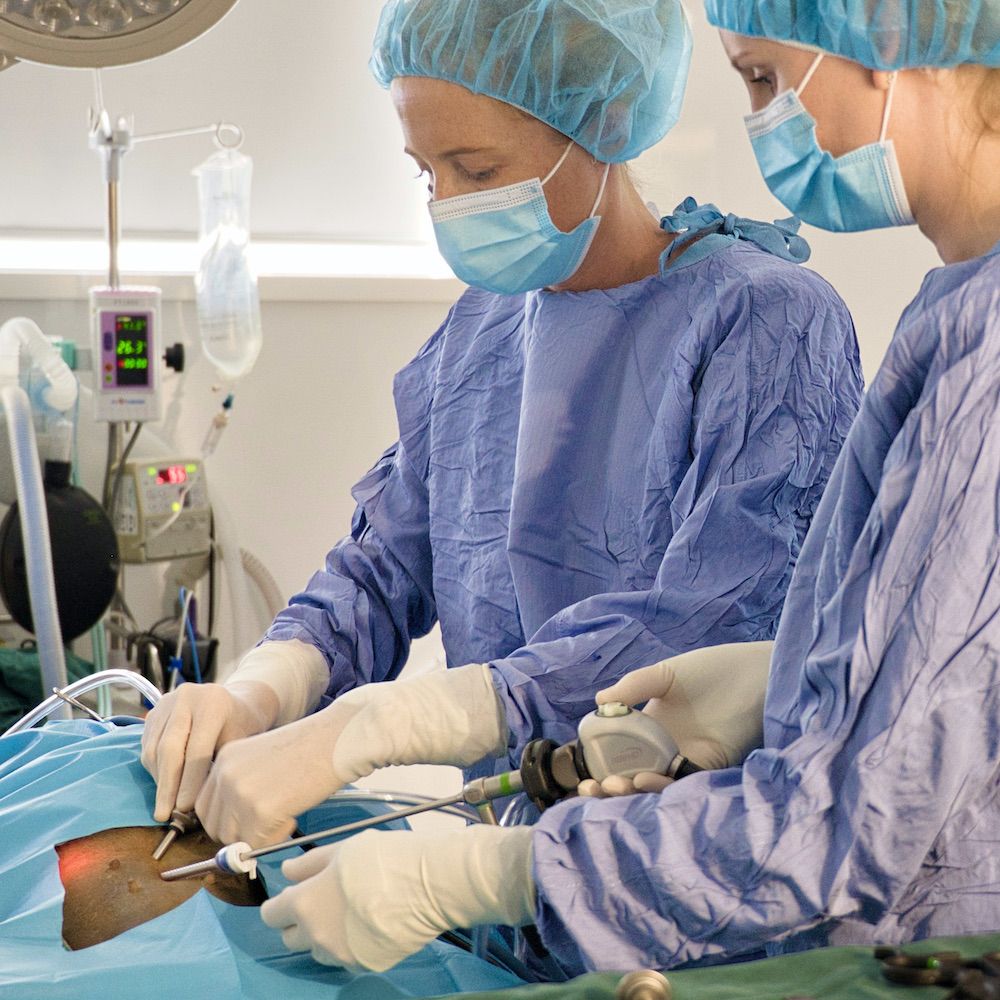Bladder stone removal
This is a perfect use of laparoscopy and a procedure we love. This is a very common problem for many of the small breed dogs with small sharp stones made of calcium oxalate being most common. They cause significant bladder inflammation and discomfort, can block the ability to urinate in male dogs and always require surgical removal.
Apart from being less traumatic and painful, the ability to see in the bladder in high definition improves the quality of treatment dramatically.
It is such a superior technique that the ACVIM guidelines for vets recommends this technique whenever possible.
In traditional bladder surgery the large bladder wound requires more sutures which can act as a nidus for stones to reform around. Because the bladder collapses and the interior of the bladder can’t be seen in open surgeries stones and grit are sometimes left behind. With the magnification of laparoscopy the stones look like boulders and even the smallest particle of grit can be identified and removed. We believe this can extend the time between relapses with this condition.
Laparoscopic bladder stone removal can be safely repeated multiple times.
Retained testicles
Laparoscopy is hands down the best way to manage testicles that haven’t descended and are still in the abdomen. It can be a challenge to locate an undescended testicle sometimes requiring extensive surgical wounds. With laparoscopy a tiny wound for a camera locates the testicle in an instant for removal through a small extra targeted wound.
Gastropexy
This is a procedure to prevent future rotation of the stomach which causes a life threatening situation called Gastric Distension and Volvulus ( GDV).
This is most common in large to giant breeds of dog and dogs with deep chests, nervous disposition or a family history of GDV.
A preventative procedure called a gastropexy can permanently attach the stomach to the abdominal wall so it can’t rotate and cause this often fatal condition.
Performing this surgery minimally invasively possibly at the same time as a lap spey makes this a way more practical and comfortable option to save more dogs.
Organ biopsies
Super cool option for accurate biopsies through tiny wounds in sick animals. Most frequently used for collecting liver samples.
Remnant ovaries
Brilliant option for locating small parts of ovaries left behind during traditional speys. Magnification and exposure is way superior not to mention the tiny wounds compared to a full open exploratory surgery.
